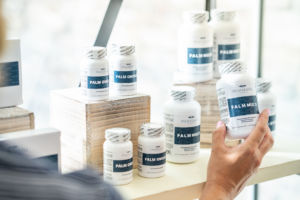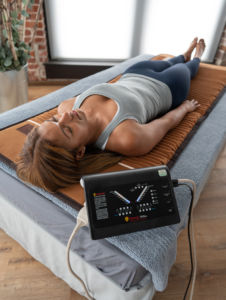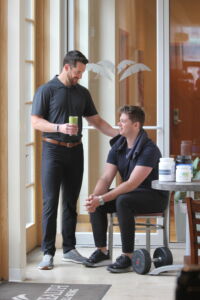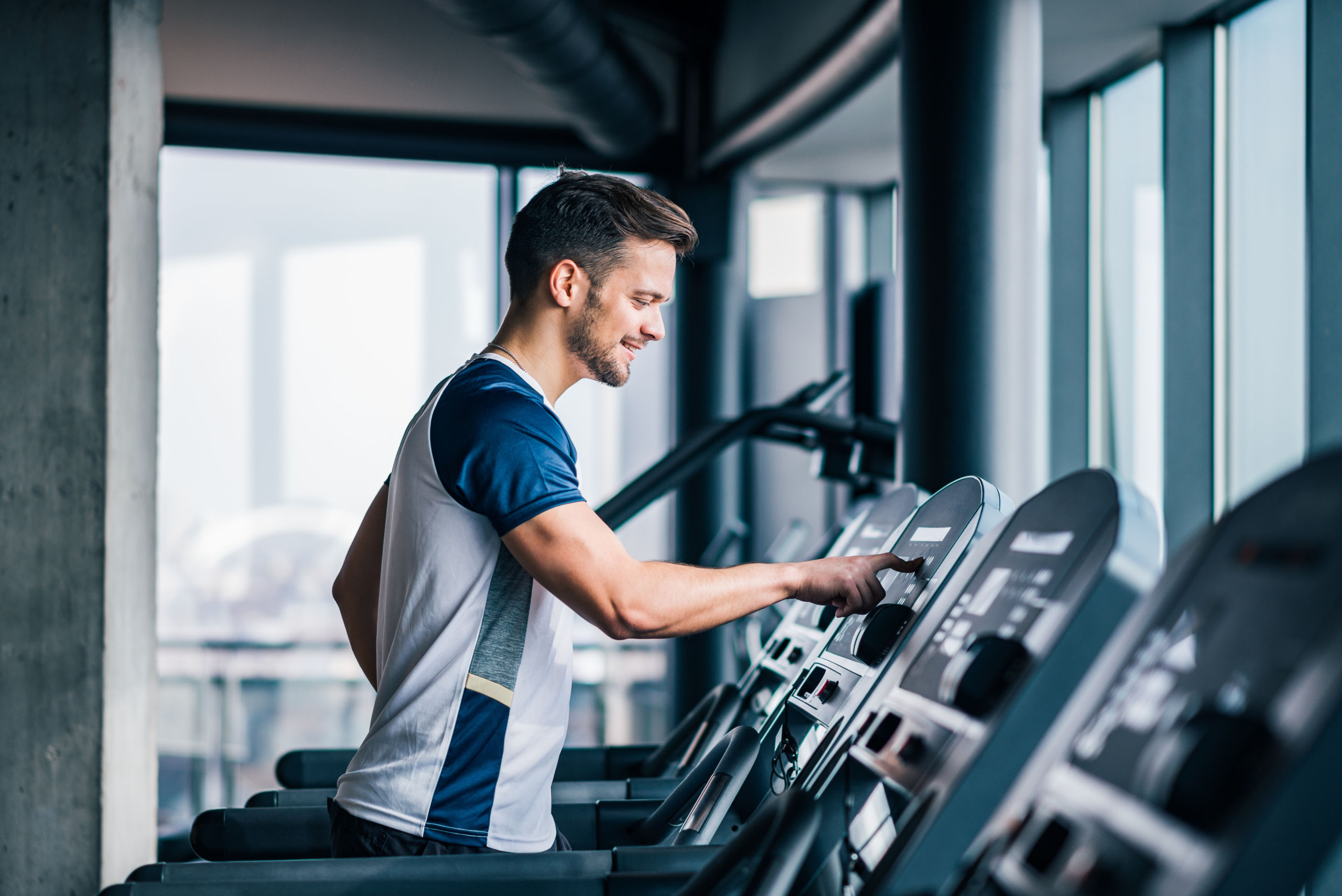What do you do when you’ve had a stressful day and need to recover from it? Take a day off, plan a relaxing evening, or maybe soak in a warm bath? Letting your mind rest and process that stress allows you to come back ready to take on the next day. Interestingly enough, this kind of recovery doesn’t only apply to your mental state. Physiologically, your body works the same way.
Stress can be defined in many different ways, whether mental or physical. In the same way that taking a little R&R time helps you deal with mental stress, giving your body specific types of recovery help it process and heal from the physical stress of exercise.
While some level of mental and physical stress is critical to your development and ability to adapt, too much can be damaging. Part of maintaining a healthy overall state of well-being is balancing the various stressors in your life and controlling your body’s response to them. It is imperative to reduce the physical stress that exercise induces with proper recovery.
As chiropractor Dr. Jake Schaake notes, “No matter what your fitness level is, if you are not recovering properly, you can’t continue to make gains to continue to grow, build, and repair.” At this point, the effects of training can become stagnant and even detrimental to your health. So what are the key components of recovery?
 Sleep
Sleep
One of the most important ways that your body recovers from physical stress — and one that is often the hardest to achieve — is sleep. Specific needs will vary depending on the person and the level of training intensity, but across the board, there is significant research showing that fewer than 6 hours of sleep correlates to a steep decrease in mental and physical function.
Work and family demands can often make it difficult to get the proper amount of sleep, but for the typical adult trying to stay fit, hitting 7-8 hours of sleep every night is crucial to recovering efficiently from physical stress.
As the volume of training increases, the body requires a greater sleep demand, so for more advanced athletes, 8-9 hours of sleep can make a big difference in the quality of recovery. Regardless of training level, getting an adequate amount of sleep is a basic starting point for proper recovery.
 Nutrition
Nutrition
Another way to ensure that your body is recovering efficiently from exercise is to nourish yourself properly. Specific nutritional needs can vary depending on the purposes of your training, but the overall goal is to make sure your body has enough fuel to sustain good function — both physically and mentally.
The best way to meet this goal is by maintaining a whole food diet. This should include plenty of fruits and vegetables, high-quality proteins (animal- or plant-based), and healthy fats such as nuts and avocados. In addition, a whole food diet helps to reduce inflammation in the body, which can lead to heart disease, diabetes, cancer, and more if not controlled.
It is important for typical adults who don’t necessarily have time to exercise daily to watch the macronutrients (protein, carbohydrates, and fat) they take in. Most people tend to have too much fat and too many carbs in their diet and not enough protein. If your schedule doesn’t allow you to exercise regularly, try to limit carbs while increasing vegetables and protein in your diet. Common sources of protein include lean meats, poultry, legumes, nuts, and eggs.
For adults exercising regularly with a combination of resistance training and cardio, the approach to nutrition is a bit more of a balance game trying to get enough fuel to attain certain strength goals while also staying lean. It is important to watch your overall calorie intake, but it is not so much about limiting carbs and fats as it is about paying attention to their quality.
 Avoid refined, simple carbs like white bread, white rice, pasta, and processed foods. Instead, try whole grains, quinoa, oatmeal, and sweet potatoes. Similarly, cut down on saturated fats and try to eat more healthy fats and especially proteins to keep up muscle mass.
Avoid refined, simple carbs like white bread, white rice, pasta, and processed foods. Instead, try whole grains, quinoa, oatmeal, and sweet potatoes. Similarly, cut down on saturated fats and try to eat more healthy fats and especially proteins to keep up muscle mass.
In contrast, more advanced athletes who are focused on gains for sports performance have a much greater need for calories. Carbohydrate and fat intake should be high in this case for the body to use as fuel, because in their absence, the body will begin to break down muscle for fuel instead.
The target amount of carbs for athletes is typically around 6 grams per kilogram of bodyweight. Protein intake should be around 1.5-2 grams per kilogram of bodyweight. Fat intake, again, depends on the quality. Getting plenty of healthy, unsaturated fats is important, but some level of saturated fats is also needed for hormone production and energy levels. However, too much can be detrimental, so they should be limited.
Regardless of the level of training, it is best to eat within 1-2 hours prior to a workout. While it is important to have fuel for the body to burn during exercise, training on a full stomach can be uncomfortable. Post-workout, protein intake is critical to allow your body to repair and build muscles.
If you find you’d like additional support in structuring your diet for proper recovery and optimal nutrition, PALM members can schedule a Functional Nutrition Assessment. You’ll go over your current diet habits, exercise, stress management techniques, and more to get a more holistic view of where you can improve your diet. Plus, you’ll work out a nutrition plan for the future.
 Training Blocks and Methods
Training Blocks and Methods
Another way to make sure your body is properly recovering from exercise is to look at the way your training itself is set up. Based on the level of intensity you are shooting for in your workouts, overtraining can lead to poor recovery, which will interfere with mental and physical performance. Similarly, undertraining can make you fall short of your goals. For most average adults focused on staying fit and preventing disease, a combination of resistance training and cardio exercise is optimal.
Resistance training — a type of exercise that uses dumbbells, kettlebells, resistance bands, weight machines, or bodyweight to increase strength — provides a relative load on the skeletal system, which can improve bone density, particularly in older women.
According to Dr. Schaake, everyone can benefit from some level of strength training. “We know a very strong predictor for longevity is grip strength, lower body strength, and lean muscle mass. These help reduce the risk for falls and fractures, improve bone mineral density, keep the brain sharp, work against cognitive impairment, and improve sleep.”
Maintaining a regular cardio regimen is also beneficial for keeping the cardiovascular system strong and functional. This can include low to moderate intensity exercises like a 30-45 minute walk or bike ride every day.
The intensity of the resistance training and cardio routines can change depending on age and ability. For older adults, it is very beneficial to continue these methods of training, and they can be easily modified to fit the intensity level you need.
If you need some help figuring out a training plan and making sure you’re executing it properly for maximum gains, you can see Dr. Schaake for a chiropractic training session!
 Supplementation
Supplementation
Taking nutritional supplements is another good way to support recovery. These can be helpful if you find it difficult to include certain nutrients in your regular diet. Protein supplements are common and can be found in the forms of drinks, shakes, and powders, such as the PALM Vegan Complete Protein Powder.
Fish oil is another popular supplement, typically in a pill form, that boosts essential omega-3 fatty acids for metabolic support and reduction of inflammation. Magnesium supplements aid in muscle repair and work to relax the nervous system. Glutamine supplements are helpful for gut and tissue repair.
Our PALM supplements are third-party verified and have a high bioavailability, which means the body can absorb them more readily, compared to other supplement brands. Shop all of our PALM supplements online.
 Therapeutic Modalities
Therapeutic Modalities
In addition to sleep, nutrition, and optimized training, there are many additional treatments you can use to promote recovery after exercise. Therapeutic modalities include cold and hot therapies, electrical therapies, and mechanical therapies. All of these are intended to target inflammation in the body that is aggravated by training and can lead to disease.
At PALM, we offer cryotherapy, infrared sauna and steam room sessions, electromagnetic cell recharge (PEMF mat) sessions, BioMat therapy, acupuncture, salt room sessions, and more. Treatments like these allow tissues to respond more efficiently to inflammation, especially as the body gets tighter and more restricted in movement with age.
Additionally, it is essential to use these modalities in conjunction with the other forms of recovery discussed earlier. If treatments are used while neglecting sleep or nutrition, recovery slows down and can become stagnant.
 Your body responds to stress, whether that be physical stress from exercising or mental stress from meeting life’s daily demands. This response can be a significant factor in your overall well-being and health, and it is important to keep this response under control so that you maximize the benefits and minimize the detriments of those stressors.
Your body responds to stress, whether that be physical stress from exercising or mental stress from meeting life’s daily demands. This response can be a significant factor in your overall well-being and health, and it is important to keep this response under control so that you maximize the benefits and minimize the detriments of those stressors.
Physical training at any level should always be approached in conjunction with elements of recovery: properly nourishing the body, getting plenty of sleep, training efficiently, and seeking out therapeutic modalities.
Fueling the body correctly and addressing the inflammation of tissues will optimize the positive effects of training, which is critical to maintaining a healthy state of overall well-being as you age.
“It’s about the fundamentals,” says Dr. Schaake. “There are a lot of fads out there, but if you come back to the fundamentals of training, nutrition, and recovery, you are going to have success that is sustainable and you’re going to be able to continue to grow.”
Want to explore a root-cause approach to your symptoms and start feeling better?
PALM Health provides concierge medicine with functional medicine experts and convenient access to comprehensive wellness and recovery services. Our memberships give you access to a wide variety of wellness services, integrative therapies, and on-site healthcare.
Like what you’re reading? Stay connected with us.
Want to stay up to date on all things health and wellness? Subscribe to our mailing list to receive educational content about the latest topics in health, tips on living well from our experts, updates on events, and special offers.








